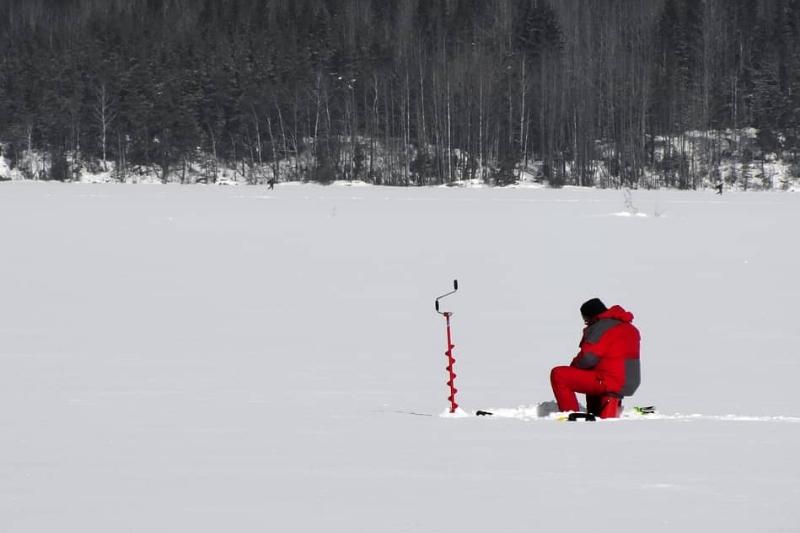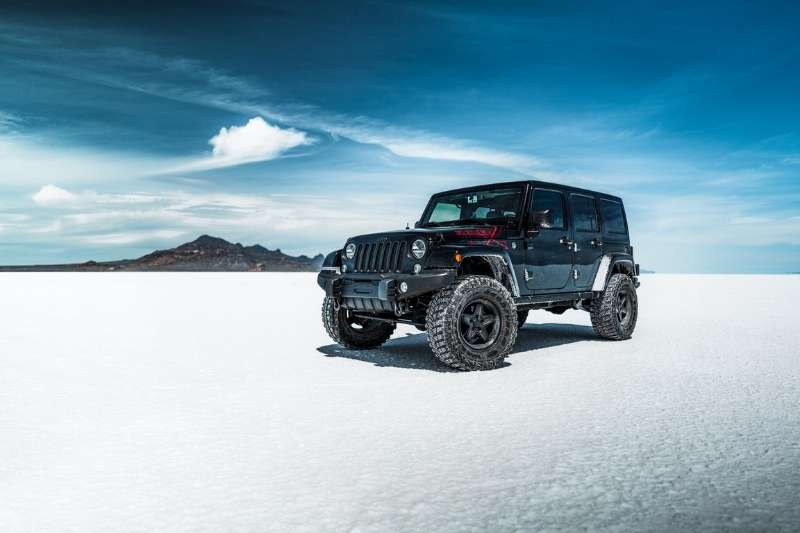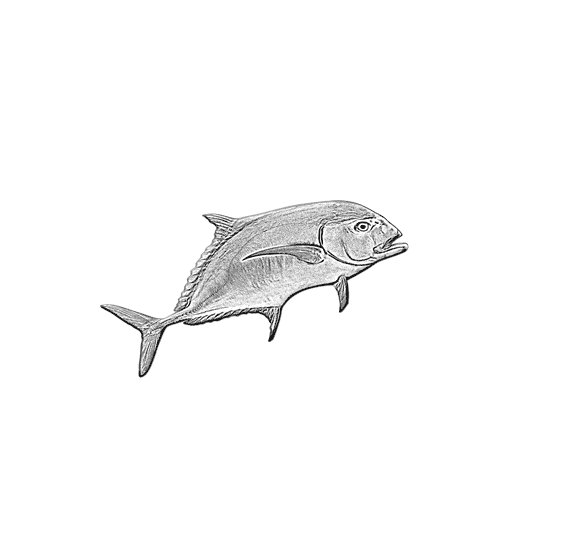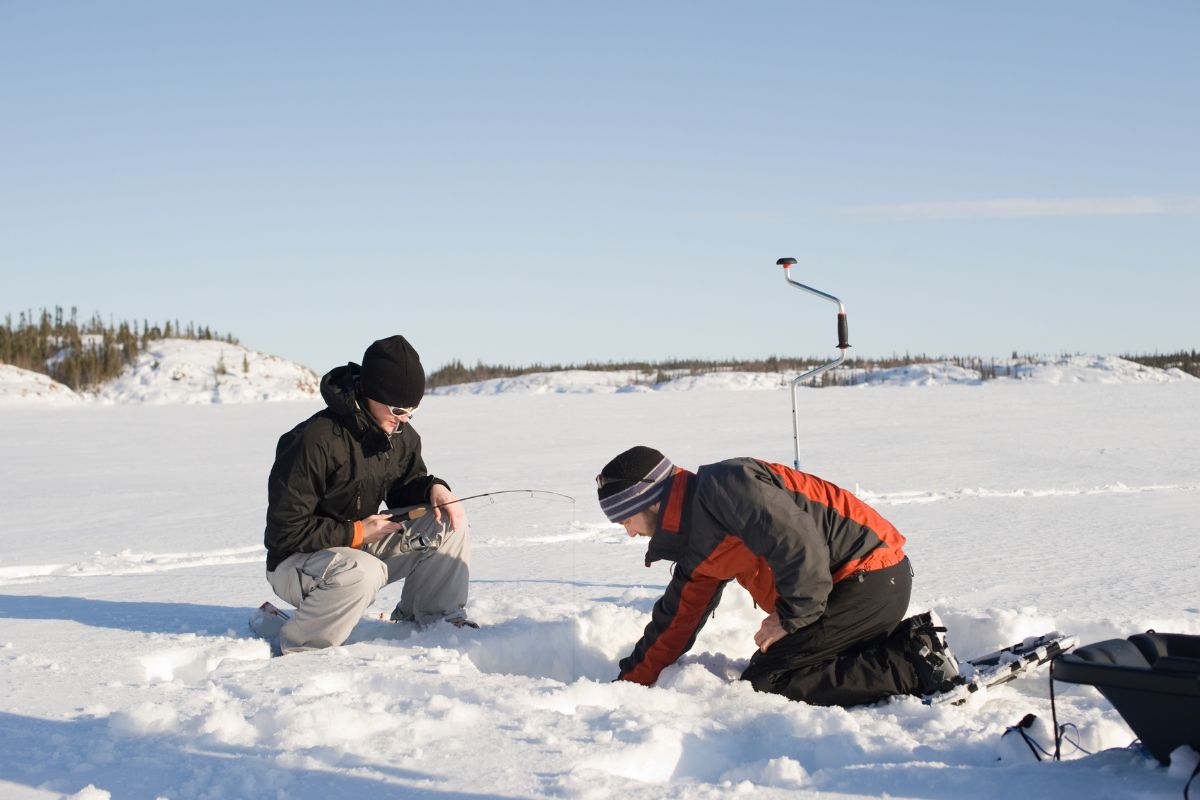Anyone who lives in California, or moving to California might be upset if they love to ice fish. California after all is the golden state, and for most of the southern part of the state, it hardly ever rains, so if you love to ice fish, is all hope lost?
We are going to tackle this question and hopefully shed some light on all of you ice fishing lovers out there to see if there just might be a spot or two on the map where you can get some seasonal fishing in.
Ice fishing is an extremely popular sport in a lot of states where they get a lot of snowfall and ice pack, so if you are thinking about moving from one of those states to California, and just love to fish in the winter, this is the article for you.
The answer is yes, you can ice fish in California, and catch some pretty decent-sized trout doing it. There are several lakes that do freeze in the wintertime in Northern California that can make your winter fishing worthwhile.
Good Ice Fishing Lakes in California
One thing to keep in mind is that California is a very big state, so depending on where you live, traveling might be required, and a typical driving trip from Los Angeles, to Sacramento, is roughly about eight hours (depending on how fast you drive).
There are a few lakes near South Lake Tahoe that do freeze, and those are Caples and Silver Lake, which are known to have some monster trout in them.
These lakes can normally bring rainbow, brown, brook, and cutthroat trout, so there is no lacking of species when it comes to California ice fishing.
There are other lakes in the surrounding area that do freeze over, but these are the most common and popular because of how much ice actually does freeze. Another popular ice fishing spot is Red Lake because of its high elevation, so make sure to check the weather report before heading up.
Here is a brief breakdown of all the good ice fishing lakes in Northern California:
- Caples Lake: Very popular.
- Silver Lake: Very popular.
- Red Lake: Usually frozen the longest, due to elevation.
- Boca Lake: Freezes Most Years.
- Prosser Lake: Freezes most years.
- Stampede: Freezes Most Years.
- Lake Davis: Less popular, and thaws faster. Horrible early morning bite.
- Castle Lake: Very popular for people near Mount Shasta.

How Long Can You Ice Fish
How long you can fish for really depends on the weather, and how many cold fronts make it up to Northern California. Since the Tahoe area is known for its beautiful lake, and very popular skiing, I have seen snow hit in early November, and stay until late May, but this is not always the norm.
There have been years, especially a few years back when the drought hit, that they hardly saw any snow, so California can be hit or miss.
Red lake has frozen over in mid-December and stayed fishable until May as well, but the typical ice fishing length in California is roughly January through March.
Always make sure to check the weather report, and check the ice before you just walk out on it. If you hear any cracking, or see it starting to thaw, get off the ice immediately and save yourself hypothermia. You want about 4 feet of ice to be covering the lake to make sure it safe to fish on.
Lure Them In
The best thing to do when you get to the lake, is find your spot that you want to fish. You need to be careful because they normally drain these lakes a little bit before winter, and so you might have to walk out further so you can get to at least 10ft deep water.
Next, take your shovel or ice auger, and drill a pilot hole to make sure the water is deep enough. Once you know your spot is good, drill several more pilot holes around yours, this will warm the water up just a bit, and will bring the fish closer to the surface where they can snag your bait.
In some of the lakes, a natural smell attractant will also help lure the fish to move closer to the surface and be more active. Fish tend to slow down in the winter, so you really need to draw them out to be active.
Best California Bait
When it comes to ice fishing in Northern California, you might want to know what the best baits are for each lake. I will put a small list of each lake and what the locals say is the best bait, and what they have had the best luck on over the years:
- Caples Lake: Rapala ice Jigs, Night crawlers, and Gold Label Balls O’ Fire eggs.
- Silver Lake: Night crawlers, Gold Label Balls O’ Fire eggs, Crippled Hearing.
- Red Lake: Orange Deluxe Balls O’ Fire eggs, Atlas Mike’s Sugar Egg, Night crawlers.
- Boca Lake: Jigs, Small Spoons, Night crawlers.
- Prosser Lake: Night crawlers.
- Stampede: Night crawlers.
- Lake Davis: Night crawlers, Balls ‘O Fire salmon eggs.
- Castle Lake: Night crawlers, Salmon Eggs.
As you can see, the trend is salmon eggs and night crawlers, but that does not mean you shouldn’t try your hand at PowerBait, or some other scented bait will do the trick to bring them up from the bottom.

Do I Need Four Wheel Drive
This all depends on the weather, but Northern California, especially the Tahoe area can get a lot of snow, and will almost always have chain controls on Highway 50.
There are times when the highway is closed, so go to Caltrans or your local news to know what the weather is going to be like. A lot of these lakes are not plowed, so some off-road vehicles may be necessary to get into the fishing area, and Lake Davis will require you to walk in, or on a snowmobile to access the lake.
Roads leading up to most of the lakes on our list are plowed, but you are on your own after parking, so please be careful. Even though there are areas you can get to within close proximity of the road, snowshoes might be needed to get to the water.
How Deep Is The Snow
Even though the weather is hard to predict, there are some averages we can look at for how much snowfall, and how many storms the Lake Tahoe area gets every year to give you a good idea of how much ice and snow they actually get.
On average, South Lake Tahoe will get around 29 snowstorms a year, over a period of December to March, which doesn’t seem like a lot, but it can dump snow. Now ranges for December average about 88 inches of snow, but there are times when they have only gotten 21 inches.
For January, the average is 102 inches, with a slow season only getting 29 inches. For February, they average about 122 inches of snow, whereas the slow years only get 31.5 inches.
And finally, March gets about 137 inches, and the slow years get about 40 inches. The slow years normally average about 25% or less of the years, so you can assume that on average they will get 12 to 20 feet of snowpack.
If another drought happens, they could only get about 12 feet of snowpack, so it is safe to say on most years, they will have enough cold and snow to ice fish.
Conclusion
I am very happy to announce that ice fishing in California is available! There are parts of the state that do stay cold for quite a few months, giving all of us ice fishing enthusiasts a few months out of the year to go freeze our butts off and catch some big trout.
Some key things to keep in mind when planning your ice fishing trip are to always check the weather report, and road conditions before leaving, as this will save you a ton of time and headache sitting on a closed highway, or getting turned around by CHP.
Another big thing is to make sure that you have the proper equipment to actually go with things like tire chains, snowshoes, and plenty of warm clothing.
Make sure you tell someone where you are going and what time you might be home, so they can check on you if you are not back around the time you should be.
And most of all, HAVE FUN, ice fishing is a very fun sport to do and can be very satisfying after pulling up a 4lb trout from an ice hole, so go out and start ice fishing this winter!

